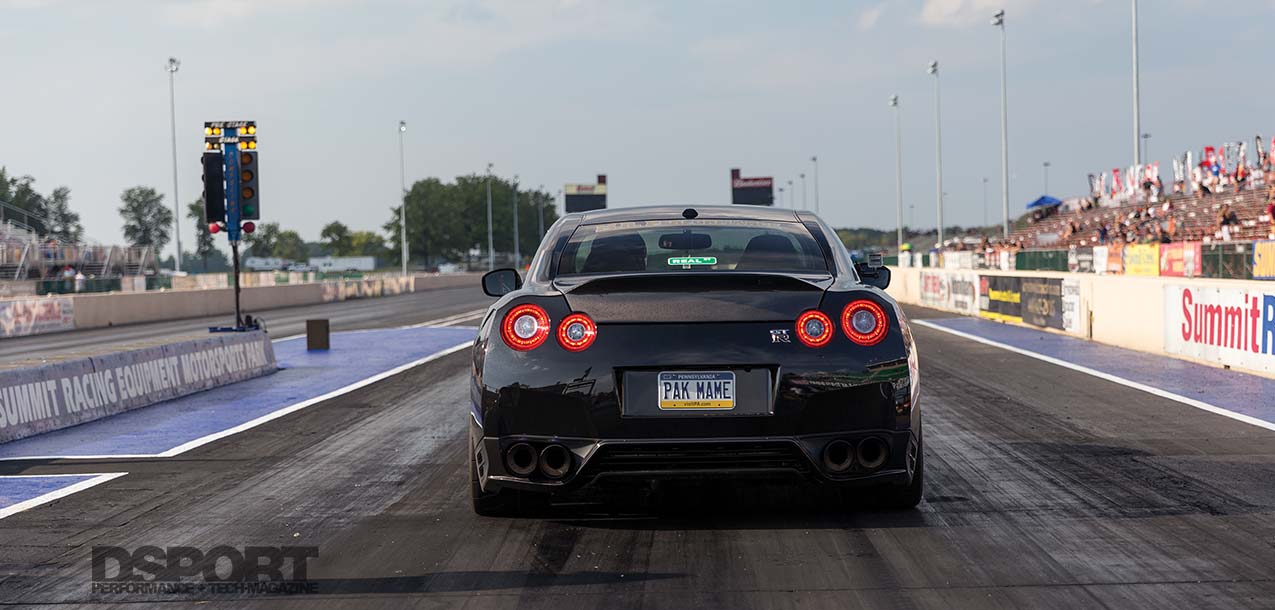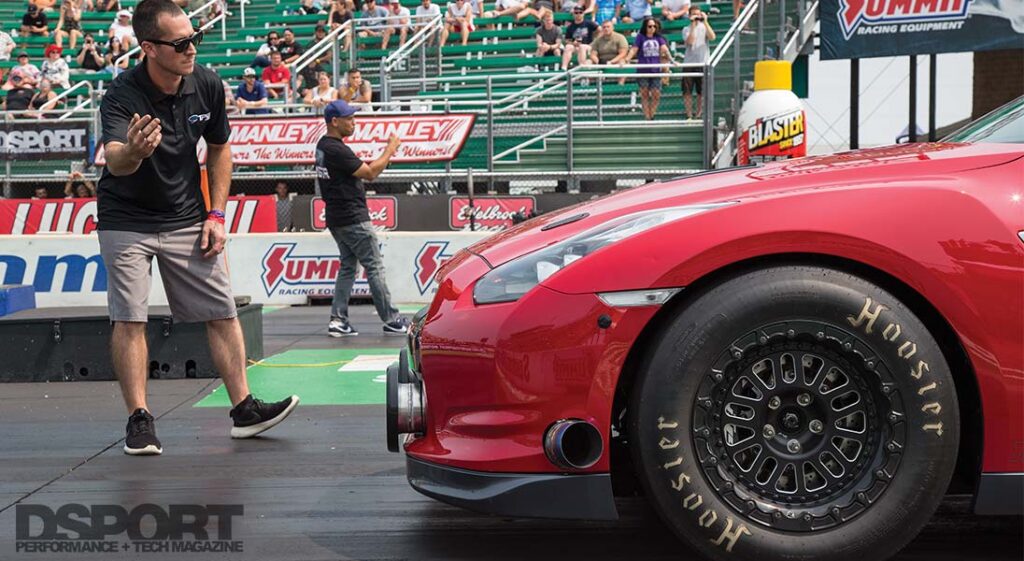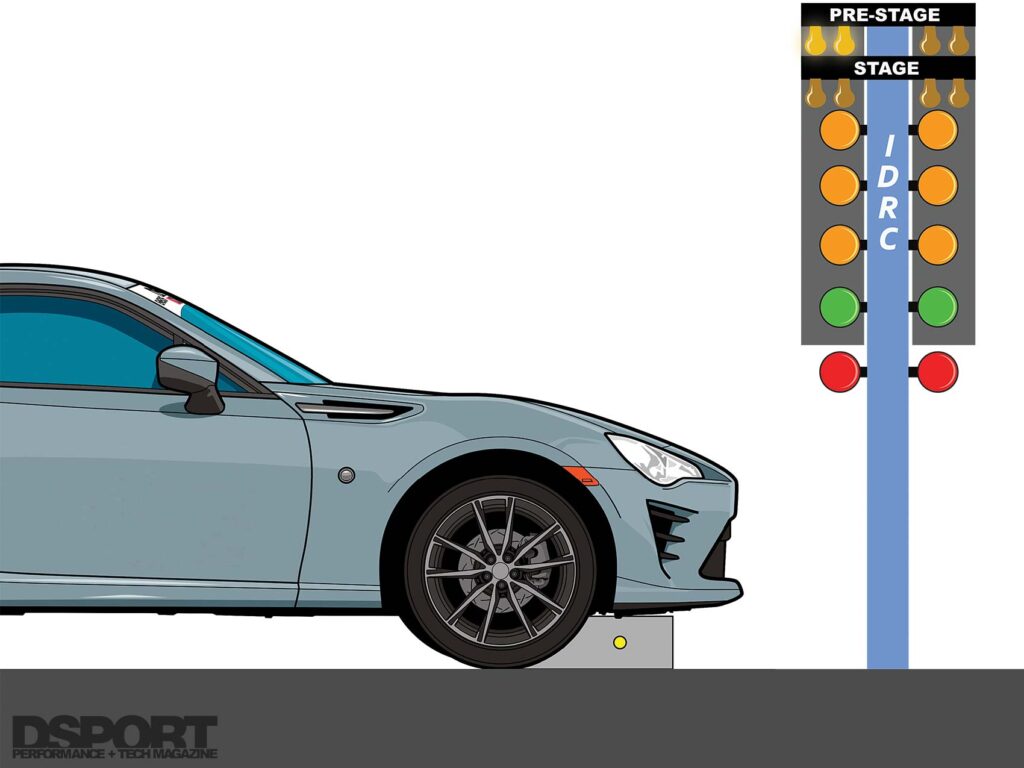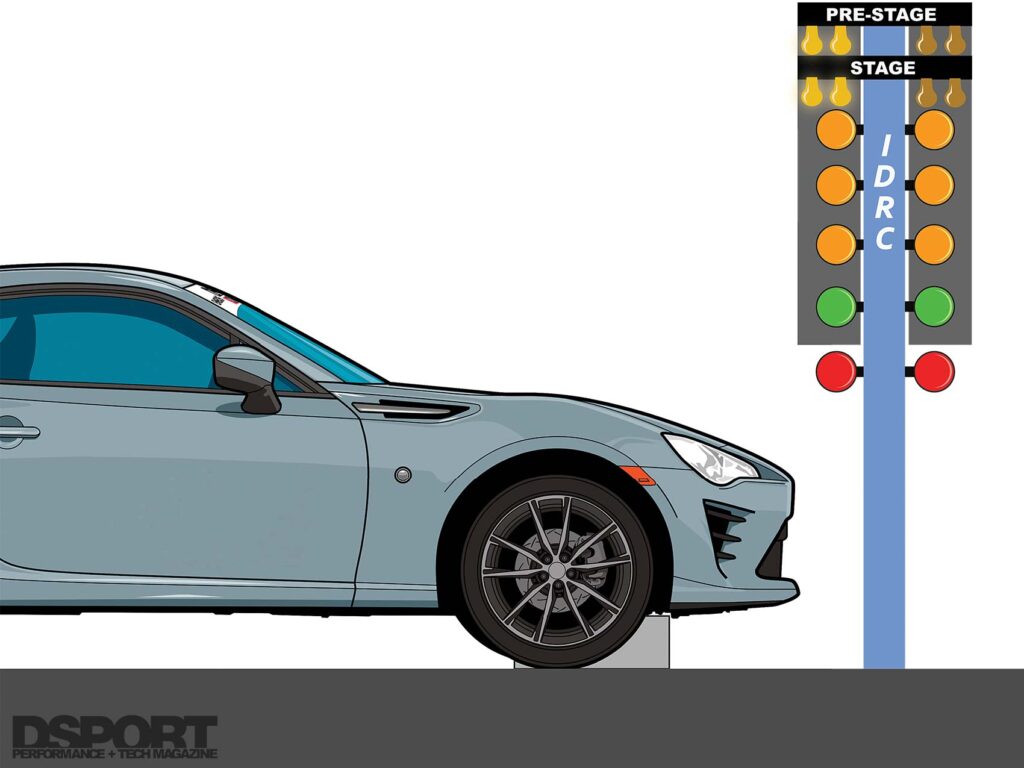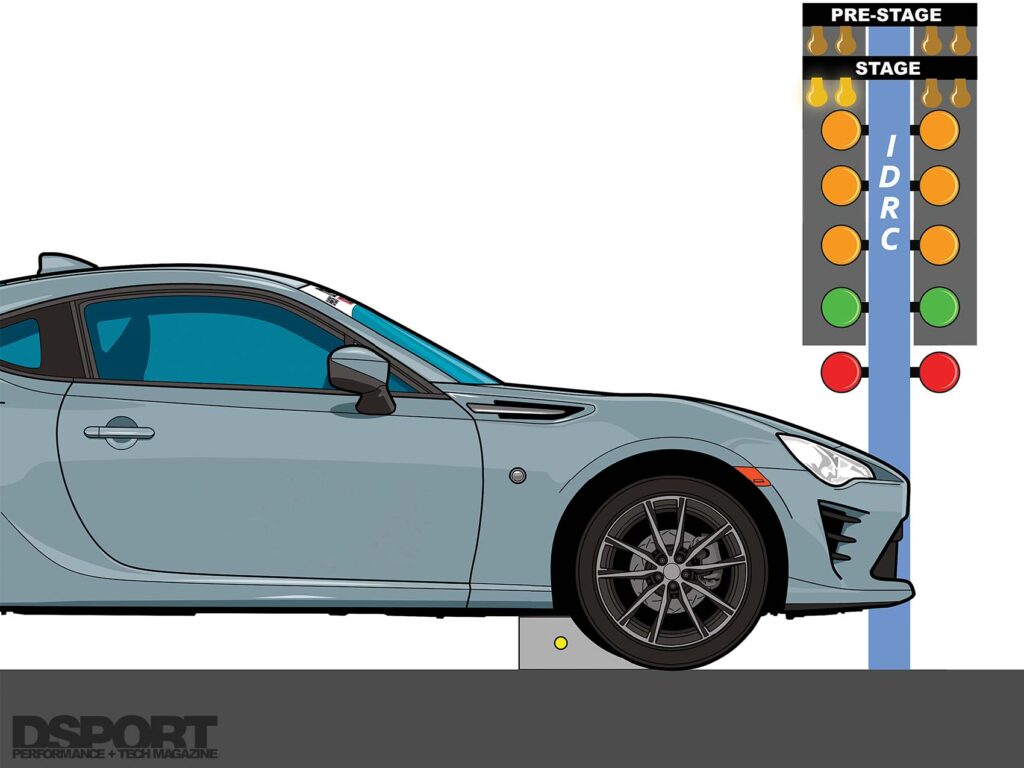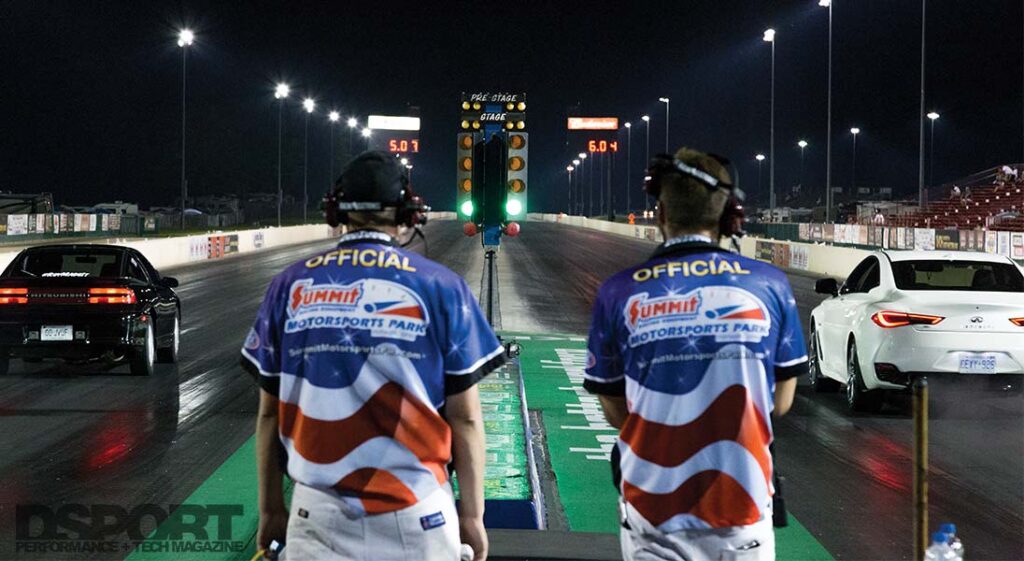Drag racing is one of the truest forms of racing. After all, there are no points for style and you certainly don’t have to go around a circuit for hours before you’re announced a winner. Instead, a quarter-mile is all it takes and the rush is real. Not too long ago, I did my first drag race on a real strip, and I was hooked. Overwhelmed by the lights, an announcer talking about how my car should win this race, and a car next to me bouncing on a two-step limiter over and over. In a flash of green, I bogged so hard the wheels hopped to a sound similar to hitting my engine with a baseball bat. After taking longer in the quarter-mile than it would take me to do a grocery run, I asked our Publisher what I did wrong. “What did you do right?” he answered. After this, I realized that there is a lot more to drag racing than launching and hitting the brakes a quarter-mile later. The more you understand about staging, the better your will perform and the less likely that you will have to get a lesson from that gritty individual on the starting line. Here is everything you should know about staging to fake it till you make it.
Text by Bassem Girgis // Photos and Illustrations by DSPORT Staff
DSPORT Issue #219
What is Staging
You pull up to do your burnout, you do it successfully, then you are rolling alongside your competitor. It’s time to stage. What do you do? Beginner racers like myself will start rolling up until they see the light bulbs on the Christmas tree go on, one light then quickly followed by the second light. The Christmas tree lights are triggered by guard beams. The two sets of staging lights are called pre-stage and stage. These infrared beams are linked to sensors. When your front tire interrupts the first beam, the pre-stage light goes on. The pre-stage light lets you know you are close to the starting line. This is followed by the second beam, the stage, and that’s your signal that you’re staged at the front line. With the second light illuminating on the Christmas tree, it’s time.
The Christmas Tree
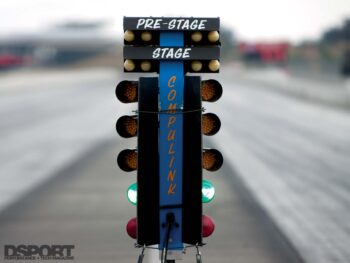 Before the Christmas tree, drag racers waited on a person with a flag to signal the launch. Of course, things were extremely unsafe and that person had to be in front of the two race cars. The Christmas tree serves as the safest, most accurate way to signal the launch. There are two types of light conventions: Pro and Sportsman light. Once both cars are staged, the Pro light mode lights up all three amber bulbs at once, followed by the green 0.400 seconds late. The Sportsman mode has each amber bulb light up in order (usually 0.500 seconds between bulbs), ending with the green light. At the top of the tree, there are two sets of double yellow bulbs to signal the pre-stage, two for each racer. The two sets under them signal that you’ve triggered the stage beam. Keep looking down and you’ll see three vertical bulbs on each side. These bulbs will light up in sequence to prepare you for the green, which sits towards the bottom followed the red bulb that would indicate that you’ve launched too soon and red-lighted.
Before the Christmas tree, drag racers waited on a person with a flag to signal the launch. Of course, things were extremely unsafe and that person had to be in front of the two race cars. The Christmas tree serves as the safest, most accurate way to signal the launch. There are two types of light conventions: Pro and Sportsman light. Once both cars are staged, the Pro light mode lights up all three amber bulbs at once, followed by the green 0.400 seconds late. The Sportsman mode has each amber bulb light up in order (usually 0.500 seconds between bulbs), ending with the green light. At the top of the tree, there are two sets of double yellow bulbs to signal the pre-stage, two for each racer. The two sets under them signal that you’ve triggered the stage beam. Keep looking down and you’ll see three vertical bulbs on each side. These bulbs will light up in sequence to prepare you for the green, which sits towards the bottom followed the red bulb that would indicate that you’ve launched too soon and red-lighted.
Pre-Staging
The first infrared beam sends the signal to the top light bulbs on the christmas tree. Once the infrared is interrupted, the two top lights will go on, indicating you’re pre-staged.
After the burnout, you will be rolling the car forward enough to reach the starting line. The Pre-Stage light will illuminate once the front tires interrupt the first beam. At this point, wait for the other driver to get pre-staged before you go forward into the Stage position. There is only a few inches you can move forward before the Stage lights will be lit. You can use your handbrake with the release button pressed to help creep forward.
Standard Staging
Once the second infrared beam is interrupted, the lower bulbs turn on indicating that you are staged. If you are running against another, DO NOT roll forward until your opponent is pre-staged.
Standard staging is when you roll through the starting area until both the pre-stage and the stage bulbs light up. If you just roll far enough to make the stage light illuminate then stop, you are shallow staged. Once you are staged, both your pre-stage and stage lights will go on, and you will be waiting for your opponent to trigger his set of pre-stage and stage lights.
Deep Staging
When you roll forward more after you’ve staged, the pre-stage beam becomes unobstructed. This turns off the Pre-Stage bulbs. This is the deepest you can start the race. Rolling any further to uncover the stage beam will redlight you if the timer is activated.
The deep staging is when you roll through the pre-stage and the stage lights, then continue moving forward until the pre-stage bulb (first bulb set) go off. This technique allows your front tire to be ahead of the stage beam, so you’re literally closer to the finish line. As a result, less of your tire will have to go through the stage beam to trigger the elapsed time clock. While this will improve your reaction time, it could increase your risk of red-lighting.
Courtesy Staging
Whether it’s a common courtesy or a rule, courtesy staging is when you light up the pre-stage bulb, then wait for your opponent to light theirs up before both of you roll forward to trigger the stage light. Once one of you creeps forward to trigger the stage light, the other follows then both of you wait for the green. As the name implies, this is the right way to stage. In some races, it will be enforced; so practice it at all times.
The Launch
With the different types of staging explained, now comes the green. The rule is, if you wait to see the green light to start your launch, you already lost the race. The correct time to launch for most cars is when you see the last light go on before the green light. It takes roughly 0.400-to-.500 seconds for you and your car to react to the light. So, if you wait for the green light, you will be well behind your opponent and you may be called out for sleeping at the tree by the announcer.
DEEP STAGING VS SHALLOW STAGING
Shallow staging is when you roll through the starting area just forward enough to barely light the stage bulbs. By shallow staging, you will give your vehicle a couple of extra inches of rollout before the elapsed timer starts on your run. As a result, shallow staging will deliver the best elapsed times. It may also result in slower reaction times depending on how quickly you and your vehicle react. Shallow staging is a good technique if you’ve been red-lighting since you’re giving yourself more time from reaction to launching.
As explained earlier, deep staging is when you go through the pre-stage and the stage beams, then continue moving forward until the pre-stage infrared beam is un-interrupted. This technique allows your front tire to be ahead of the stage beam, thus closer to the finish line. As a result, less of your tire will have to go through the stage beam to trigger the elapsed time clock. While this will improve your reaction time, it could increase your risk of red-lighting.
Deep staging and the shallow staging are all techniques used by experienced drag racers to fine tune their elapsed times, reaction times, or simply prevent themselves from red-lighting. If you’re a non-experienced drag racer, you will find it difficult to focus on such tiny differences that are just inches away from each other, all while you’re listening to your opponent hit their rev-limiter, the announcer talking, people watching, getting your car prepared for the launch, and the hundred other thoughts that will be going through your head. The best practice is to get good at shallow staging. More practice will result in better results.
In addition to having a consistent staging position, be sure to make yourself a consistent launch procedure. Technologies like a two-step rev limiter or a launch mode on certain vehicles will improve the consistency of your launch allowing you to work on your reaction times. Remember consistent launches require consistent actions. If you are not getting the best reaction times or 60-foot times, try making one change at a time and keep a log. Don’t change the two-step rev limit, the tire pressure and the staging position all at once and then later try to determine which of those three things helped or hurt the performance. Bottom line is you are probably going to make a few mistakes on your first pass. Everyone does. Don’t worry, just try to make one less mistake on the next pass. Before you know it, you will be a pro.
The Bottom Line
Obviously, if you’re a drag racer, then this is all second nature to you. However, beginner drag racers could benefit from knowing all of the techniques available for them, what’s allowed and what’s not. Finding the best type of staging for yourself could depend on the rules of the class you’re racing in, but if there are no rules regarding staging, it depends on your preference. If you’ve been red-lighting a lot, then deep staging is not for you. If you feel you want to improve your reaction time, then shy away from shallow staging. If you want to do it right and be courteous and safe in whatever class you race in, then practice courtesy staging. Regardless of the technique, don’t wait for the green light to launch.


